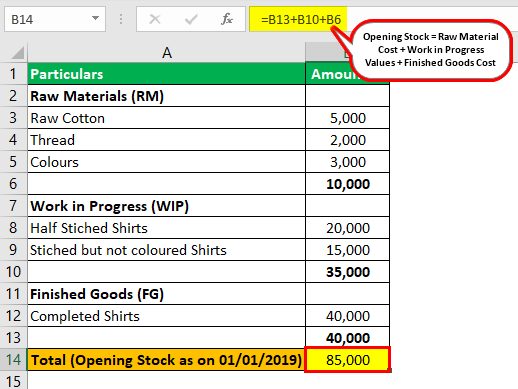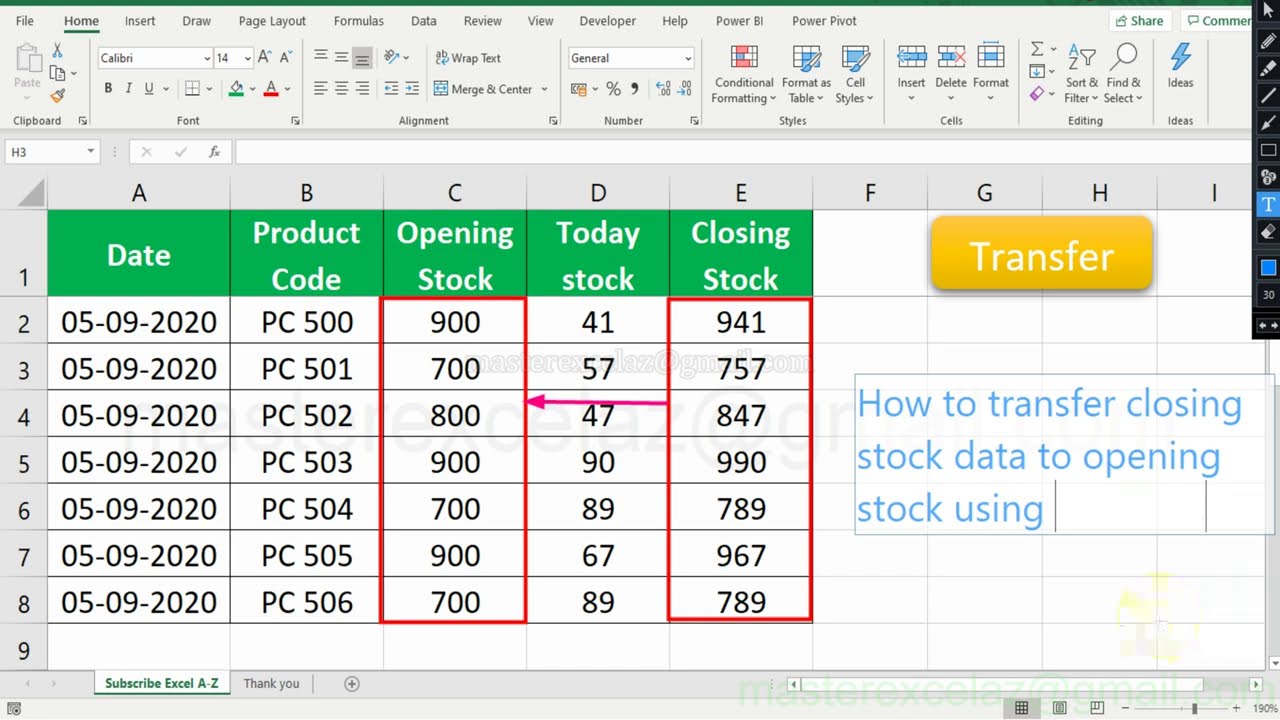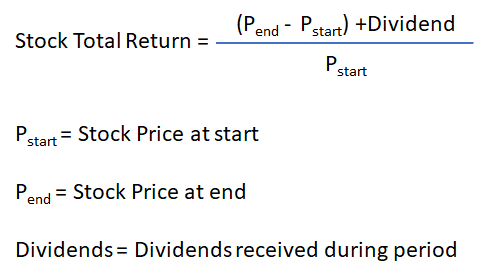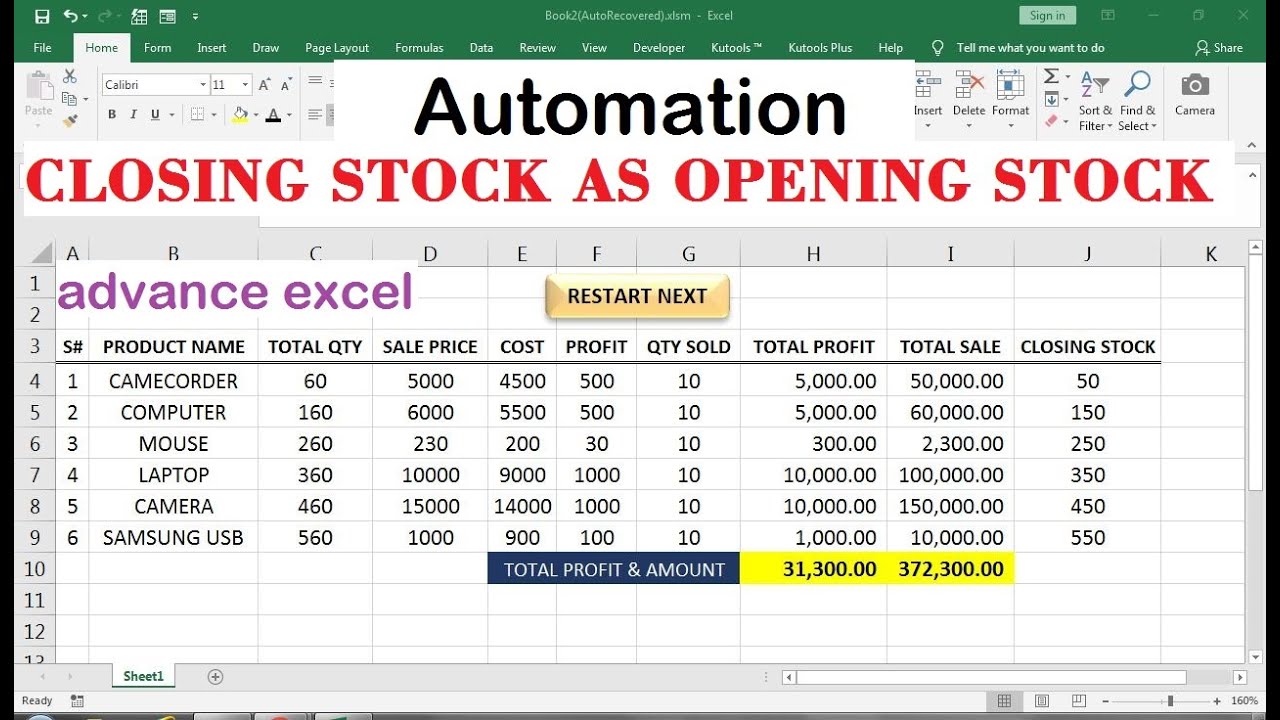Table of Contents
- Introduction
- Understanding Opening Stock
- Formula for Calculating Opening Stock
- Example Calculation
- Factors Affecting Opening Stock
- Key Takeaways
- Frequently Asked Questions (FAQ)
1. Introduction
In any business, managing stock effectively is crucial for maintaining a healthy bottom line. Calculating the opening stock accurately forms the basis for proper inventory management. This comprehensive guide will walk you through the process step by step.
2. Understanding Opening Stock
Opening stock refers to the inventory of goods that a business holds at the beginning of a particular accounting period. It includes finished products, raw materials, and any work-in-progress items.
Definition
Opening stock refers to the inventory a company has on hand at the beginning of an accounting period.
Importance
Calculating the opening stock accurately is essential for proper financial analysis and inventory management. It helps businesses determine the cost of goods sold (COGS), evaluate profitability, and plan for future inventory needs.
Opening Stock Formula
The formula to calculate opening stock is:
Opening Stock = Closing Stock of Previous Period
Example
Let's say a company had a closing stock of $10,000 at the end of the previous accounting period. To calculate the opening stock for the current period, they would use the following formula:
Opening Stock = $10,000
Understanding opening stock and being able to calculate it accurately is crucial for proper financial management. By determining the opening stock, businesses can effectively track inventory, assess costs, and make informed decisions regarding production, sales, and profitability.

3. Formula for Calculating Opening Stock
To calculate the opening stock, you can use the following formula:
Opening stock refers to the value of inventory or stock items that a company has at the beginning of an accounting period. It is an essential component in calculating the cost of goods sold (COGS) and determining the profitability of a business.
The formula for calculating the opening stock is as follows:
Opening Stock = Closing Stock - Purchases + Sales
- Closing Stock: Closing stock represents the value of inventory or stock items at the end of the previous accounting period. It can be obtained from the balance sheet or inventory records.
- Purchases: Purchases refer to the value of new inventory or stock items purchased during the accounting period. This can be obtained from purchase invoices and records.
- Sales: Sales represent the total value of goods sold during the accounting period. This information can be derived from sales records or invoices.
By using this formula, you can determine the opening stock for a given accounting period, which is crucial for accurate financial reporting and inventory management.

Opening Stock = Closing Stock of Previous Period + Purchases - Sales
4. Example Calculation
Let's say you are analyzing the opening stock for the year 2022. You had a closing stock of $50,000 in 2021. Throughout 2022, your purchases amounted to $150,000, and sales equaled $100,000. Using the formula, the opening stock for 2022 can be calculated as follows:
Calculating the opening stock for a business is essential for accurate inventory management. This helps in determining the value of goods available at the beginning of an accounting period.
The formula to calculate opening stock is:
Opening Stock = Closing Stock - Purchases + Sales
Let's break down the formula:
- Closing Stock: It refers to the value of inventory at the end of the previous accounting period. This information can be obtained from the company's financial records.
- Purchases: This represents the value of new inventory purchased during the current accounting period. It includes both cash and credit purchases.
- Sales: This represents the value of goods sold during the previous accounting period.
By substituting the values into the formula, you can easily calculate the opening stock for any given period.
It's important to keep accurate records of stock transactions and update them regularly to ensure precise calculations.
Remember, opening stock calculation helps in making informed business decisions and is vital for maintaining an optimal inventory level.

Opening Stock = $50,000 (Closing Stock 2021) + $150,000 (Purchases 2022) - $100,000 (Sales 2022) Opening Stock = $100,000
5. Factors Affecting Opening Stock
Several factors can influence the opening stock of a business. These include seasonality, market demand, economic conditions, and production capacity. Understanding these factors is essential for accurate forecasting and inventory management.
Opening stock is the inventory of goods a company holds at the beginning of an accounting period. It plays a significant role in determining a company's financial position and profitability. Calculating opening stock requires considering several factors.
Factors Affecting Opening Stock
- Purchases: The total value of goods purchased during the accounting period affects the opening stock. Higher purchases increase the opening stock, assuming no or minimal sales or inventory adjustments occurred.
- Inventory Adjustments: Any changes made to the opening stock due to factors like damage, spoilage, theft, or returns affect the calculation. These adjustments are crucial for accurate opening stock valuation.
- Sales: Sales made during the accounting period decrease the opening stock. It is important to account for the sold goods when calculating the opening stock.
- Opening Stock of the Previous Period: The opening stock of the previous accounting period is carried forward as the opening stock for the current period. It sets the starting point for inventory valuation.
- Closing Stock of the Previous Period: The closing stock of the previous accounting period is subtracted from the opening stock of the current period to calculate the goods available for sale.
Calculating Opening Stock Formula
The formula to calculate opening stock is:
Opening Stock = Opening Stock of the Previous Period + Purchases - Sales + Inventory Adjustments - Closing Stock of the Previous Period
Understanding the factors affecting opening stock and using the correct formula is crucial for accurate inventory valuation and financial reporting. By considering purchases, inventory adjustments, sales, and the opening and closing stock of the previous period, companies can determine the value of their opening stock at the start of each accounting period.

6. Key Takeaways
- Opening stock refers to the inventory held by a business at the start of an accounting period.
- The formula for calculating opening stock is Opening Stock = Closing Stock of Previous Period + Purchases - Sales.
- Understanding factors that affect opening stock is crucial for effective inventory management.
7. Frequently Asked Questions (FAQ)
Q1: What if I don't have the closing stock of the previous period?
If the closing stock of the previous period is unavailable, you can estimate it by considering factors such as average monthly sales, purchase trends, and historical data.
Q2: Is opening stock the same as beginning inventory?
Yes, opening stock is often referred to as beginning inventory, as both terms represent the same concept of the inventory available at the start of an accounting period.
Q3: How frequently should opening stock be calculated?
Opening stock should be calculated at the beginning of each accounting period to accurately track inventory and facilitate proper stock management.


No comments:
Post a Comment